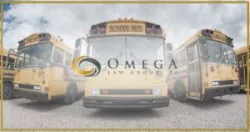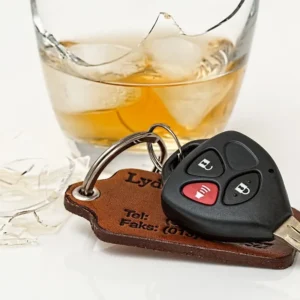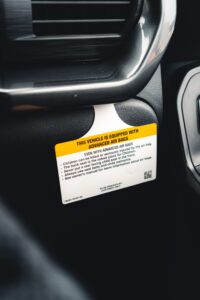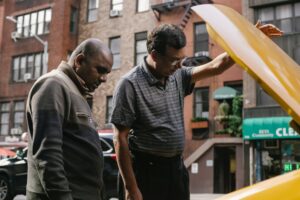
- Plan your morning and afternoon routes in a way that avoids school zones if you can help it. The fewer cars driving near schools, the fewer risks there will be of pedestrian accidents between a driver and a student.
- Whenever you do drive through a school zone, decrease your speed to the posted speed limit or slower if that is what is safe.
- Make eye contact with any children who are crossing in front of your car. This brief acknowledgment can be all it takes to prevent an accident and reinforce crossing safety for a child.
- Adhere to all directions and orders from school crossing guards in the area. They might direct you to stop, slow down, or take an alternate route to avoid an area congested with schoolchildren. They know what is happening with the vehicle and foot traffic around the school, so listen to them closely.
- Never pass a bus that has its stop sign showing, or that has children entering or exiting it. If you do pass a bus with its stop sign and lights showing, you not only endanger the children in the area but you also can get cited and fined.
- Drive defensively in a school zone, which means you should stay in your lane and make predictable movements. Do not try to pass another car in a school zone, and make minimal lane changes.
Back-to-school safety tips for parents:
- Take a minute to talk to your children about basic school safety procedures and hints. If they walk to or from school, then you certainly should review how to safely act when around moving vehicles. Show them that you care about safety, and your children will take note.
- Get your child a backpack that is well fitted to them. It should have wide and padded shoulder straps to reduce irritation and ache. They should also not carry a backpack that is more than 15% of their total body weight, as this can eventually cause a back injury.
- Check your child’s school supplies for nontoxic compliances. Products like markers, paints, pens, and art supplies should be double-checked. Keep in mind that a product that has been labeled as “conforms to ASTM D-4236” does not mean the product is nontoxic. It only means that any toxic components have been labeled.
- You can request a playground tour with the school administrator before your children go back to school. During the tour, you can look for any potential hazards that need to be addressed before children are allowed to play there.
- Provide your child with virus protection equipment like masks, gloves, and hand sanitizer (if) it is required or if your child feels safer with them. Ensure your child knows about all social distancing guidelines that might be in place at the school, and that they know the importance of following those guidelines.
We can all work towards the safest and most fun school year yet for our children if we all think about safety. From our team at Omega Law Group Injury & Accident Attorneys in Los Angeles, here’s to wishing the best for you and your family!
For more safety back-to-school safety information, you can visit:
- National Safety Council Back to School Safety Checklist
- ADT Security Back to School Safety Tips
- Nationwide Children’s Back-to-School Safety





